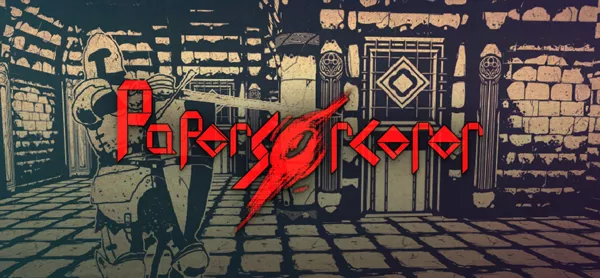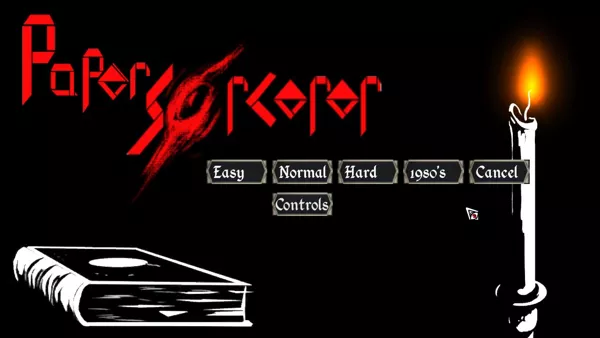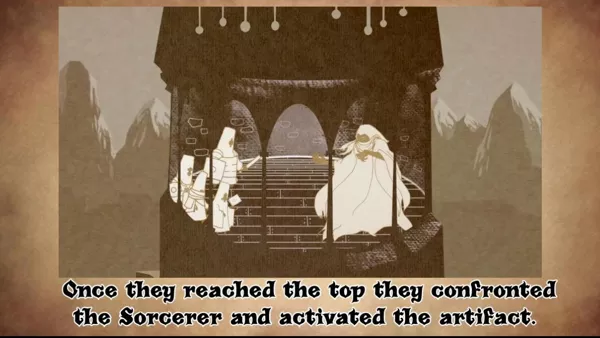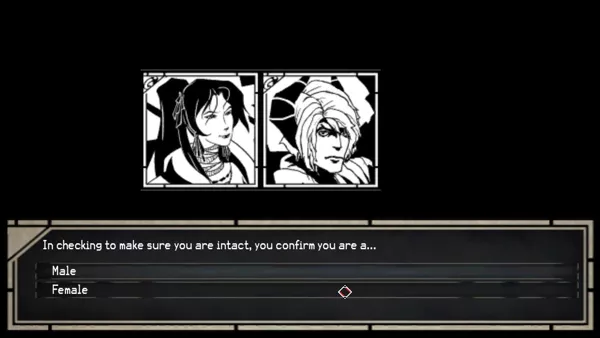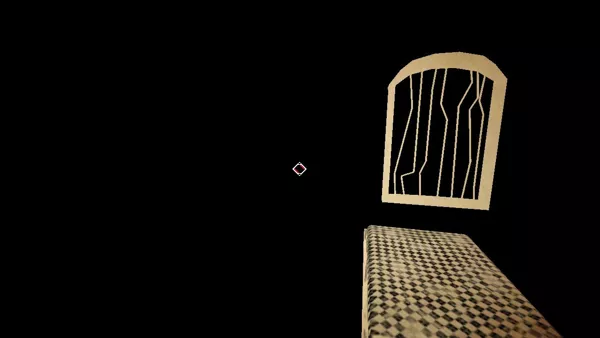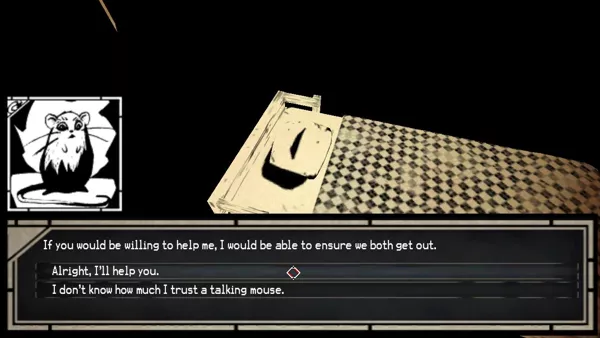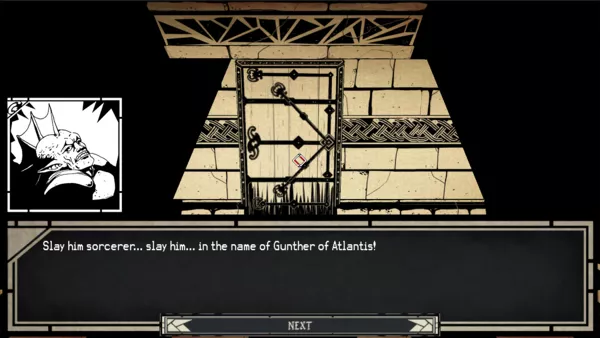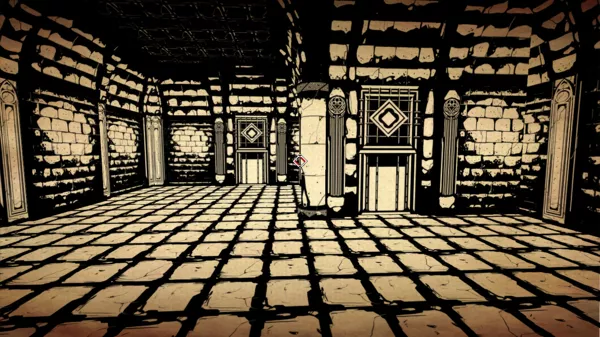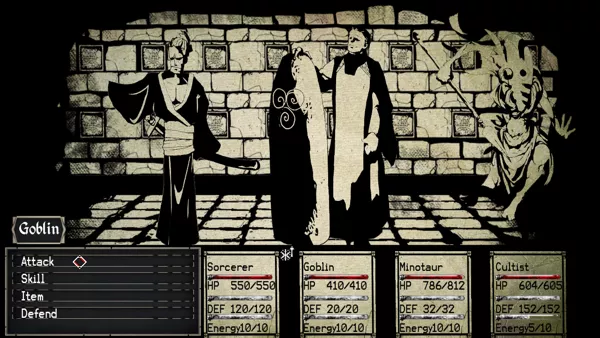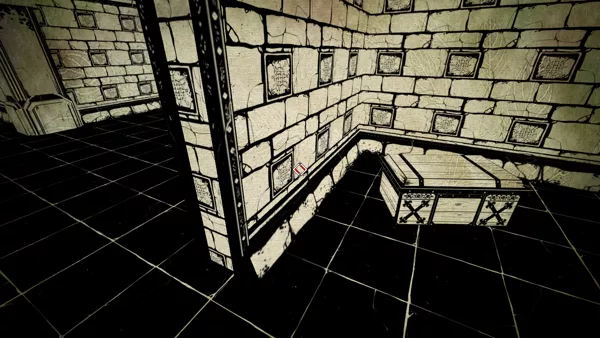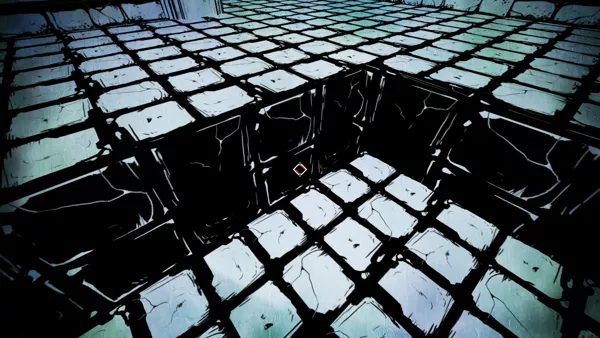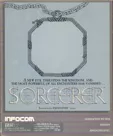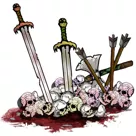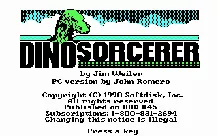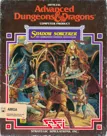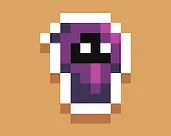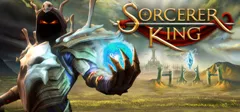Paper Sorcerer
Description
Paper Sorcerer is a turned-based fantasy role-playing game, with a noticeable art style of completely hand drawn ink and pencil graphics.
The player takes the role of a sorcerer, once defeated by the four heroes of the king and now is attempting to break free from captivity with the help of an unknown ally. After the player escapes the cell room, the player now has ability to summon a creature to serve as a party member.
Summoned creatures have different physical combat and/or magic skills in addition to a limited selection of weapons, armor, and accessories they can equip. A werewolf for example, cannot equip any weapons (uses claws instead) and may only use light armor. A skeleton however, can equip longswords as well as light, medium, and heavy armor. As the game progresses, the player may summon additional creatures once a floor level has been completed. Only one creature type may be summoned in the party with up to a maximum of four party members, including the player.
Combat
Turned based combat occurs when the player moves into range of an enemy, who are viewable while travelling. There are no random encounters. The party members, depending on their skills have a wide range of options, such as a normal attack, defending, and using a special skill or magic, both of which requires energy to use. Energy is regenerated by 1 per turn (or more if using a skill).
Defense is also a factor during combat, as a higher defense will thwart any direct damage to health. The amount of damage sustained once the defense is gone, is considerably high, although there are summoned creatures that have abilities to support the party's defense. Magic may ignore defense, however at half the damage.
Groups +
Screenshots
Promos
Credits (Windows version)
4 People (3 developers, 1 thanks)
| Art Design, Character Art | |
| Game Design, Scenario Design | |
| Alternate Cover Art | |
| Music Composition | |
| Writing | |
| And generally making almost the whole thing | |
| Art Design, Opening and Ending Animation, Icons and Sprites, Additional Character Art, Cleanup Artist | |
| Video Editing and Compositing | |
| Cover Art | |
| Additional Scenario Design | |
| Producer | |
| PR | |
| Writing and Editing | |
| Mobile and Steam Integration | |
| Special Thanks to |
|
Reviews
Critics
Average score: 77% (based on 4 ratings)
Players
Average score: 3.5 out of 5 (based on 4 ratings with 1 reviews)
Short linear dungeon crawler with own visual style and heavy emphasis on fighting.
The Good
Paper Sorcerer is presented in an own visual style, which is very consistent and very pleasant. Although graphics are minimal, consisting mainly in static pictures, like in the town, the world inside a magical book is very believable.
The character classes are unusual, although their skill sets are common for computer RPGs, with more defending tanks, healers and damage dealers. But as each character is gathering a really huge set of skills, which are also getting stronger during the game (they sometimes upgrade on level ups), the earlier spells don't get useless and also each character has the possibility to vary their role a bit. As equipment has a huge impact it is very satisfying to find a hidden room with that item that gives a character that extra boost on the required stat. Boosting skills at the skill trainer is basically handled as money sink for all the money you can't spent at the merchant buying new weapons and armour.
Fighting is fun and sometimes complex, although you only cast spells or attack specific enemies. The fun results from the required energy and defence management, which can be tricky, as energy is not renewed after the fights, so it is often better to have a longer fight than to start the next fight with empty energy and not being able to take out the healer or sorcerer of the enemy group instantly. Some of the end-of-level guardians are tricky, and potions and items can help a lot to defeat them. The four difficulty levels also add challenge.
I liked the story, which accompanies the fighting through the dungeon well. It also has two twists, one at the beginning (you are the evil and locked away by the good ones) and the one after finishing the game.
The Bad
The levels are very small and linear. Although this gives a good flow of progression as you very often switch to the next level, exploration is not really present in the game. I think this has its good side, too, as there is no auto-map (and I drew enough maps on paper playing computer RPGs in my life).
Puzzles are limited to "find the locked door to the key you just found" or press the button to open a wall somewhere behind you.
Although the art style is unique and consequent, level textures are too repetitive, which sometimes cause problems in orientation, as each corner looks the same than the other (even if the levels are very small).
Despite the consequent art style, music is not fitting too well in the game world, with very different style of tunes, from chip-tunes to Latin rhythms.
Story is reduced to the main plot, which is, although sufficient, not quite complex, too. There are some strange characters to meet in the town, but most of them are only there just as filling, spoiling some short sentences with tips, and I wanted to ask them: "Who are you? Why are you locked here in the book?", which is not possible.
The Bottom Line
A short game with unique style, heavily based on fighting, with a nice little story letting you rush for better equipment, a stronger combination of characters in the party and a better use of the skills you get. Quite linear, but very good fun for some hours and very challenging on the higher difficulty settings.
Windows · by Jo ST (24007) · 2014
Analytics
Identifiers +
Contribute
Are you familiar with this game? Help document and preserve this entry in video game history! If your contribution is approved, you will earn points and be credited as a contributor.
Contributors to this Entry
Game added by Indra was here.
Linux, Macintosh added by Iggi.
Game added March 18, 2014. Last modified January 1, 2025.


